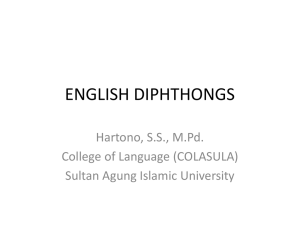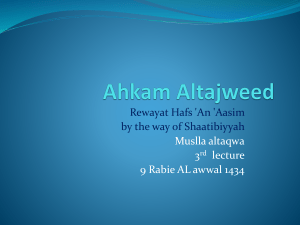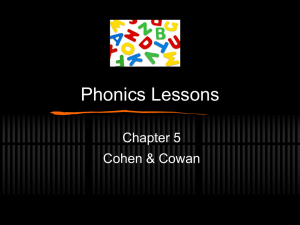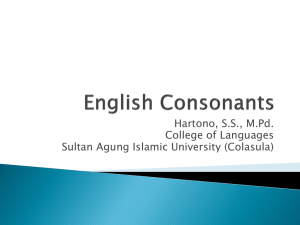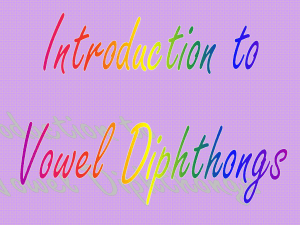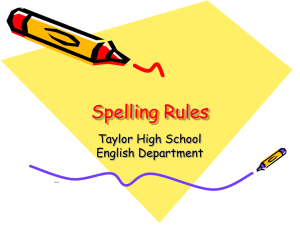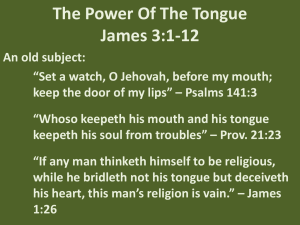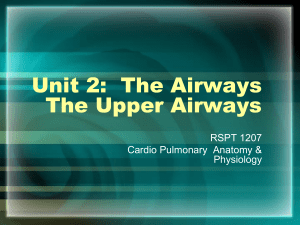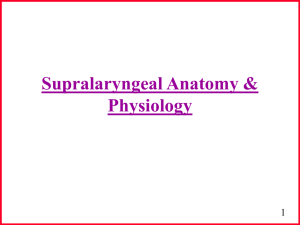Introduction to Phonetics and Phonology
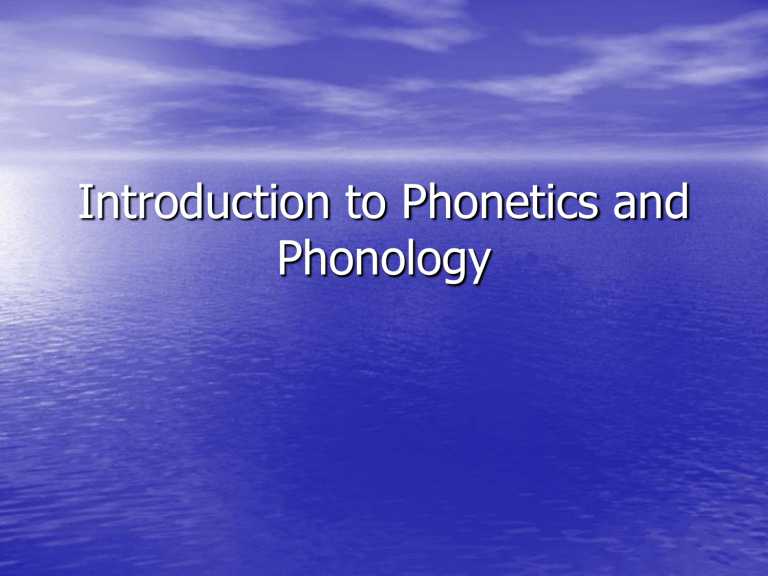
Introduction to Phonetics and
Phonology
Plosives
• also called STOP CONSONANTS
• the breath is completely stopped at some point in the mouth and then released with a slight explosion
• speech organs which may form plosives: lips
(bilabial plosives), tip of the tongue (alveolar plosives), back of the tongue (velar plosives)
• all six plosives (/p, b, t, d, k, g/) may occur at the beginning of words, in the middle of words and at the end of words
• these positions are important because plosives are articulated differently in different positions
/p, b/
•
bilabial plosives
• the lips are closed firmly, the soft palate is raised so that the air cannot go through the nose, but is trapped in the mouth for a while
• when the lips open suddenly, the air rushes out with a slight explosion or a popping noise
• before the lips open, other speech organs assume the position for the following sound, whether it be a vowel or a consonant
• /p/ - strong, voiceless
• /b/ - weak, voiced
• when /p/ is found at the beginning of a word, it has a special feature – ASPIRATION
• e.g.
pull, pot, put, pat, pet, pit
• /p/ between vowels is less aspirated
• e.g.
happy, paper, supper, apply
• in final position, /p/ is also less aspirated
• e.g.
rip, rope, tap, cap, wrap
• /b/ never has aspiration
• e.g.
book, bar, back, bell, bit, bean
• /p/ at the end of words shortens the preceding vowel, whereas /b/ is weak and lengthens the preceding vowel
• consonant clusters of /p/ or /b/ and other plosives are produced a little differently (topic of our next class)
/t, d/
•
alveolar plosives
• the tip of the tongue is pressed against the alveolar ridge
• the soft palate is raised, the breath does not go into the nasal cavity, it stays trapped in the mouth for a while
• the sides of the tongue are firmly pressed against the sides of the palate so the air cannot pass over the sides of the tongue
• the tip of the tongue is lowered suddenly and the air rushes out with a slight explosion or a popping noise
• /t/ is strong, voiceless and aspirated
• e.g.
top, tin, tan, ten, ton
• /d/ is short, weak and never aspirated
• when /t/ occurs word-medially, it loses some aspiration
• in final position, /t/ is also less aspirated and shortens the vowel before it
• /d/ is weak, makes very little noise but lengthens the vowel that precedes it
• when followed by other plosives or /m, n, l/, /t/ and /d/ are pronounced differently (topic of our next class)
/k, g/
•
velar plosives
• the back of the tongue is in contact with the soft palate, which is raised, so the air cannot go into the nasal cavity and is trapped in the mouth
• when the tongue is lowered suddenly from the soft palate, the breath rushes out of the mouth with a slight explosion or a popping sound
• /k/ is strong, voiceless and aspirated
• e.g.
cot, cat, cart, kill, keep
• when /k/ occurs between vowels, the aspiration is weaker or even absent
• /g/ is weak, voiced and has no aspiration
• in final position, /k/ shortens the vowel before it,
/g/ lengthens the vowel before it
• when /k/ and /g/ are followed by other plosives or /m/ or /n/, these sounds are produced in a different manner (topic of our next class)
Affricates
• /t , d /
• these two phonemes are articulated both with friction and with explosion of air
• tip of the tongue touches the back part of the alveolar ridge
• the soft palate is raised so that air is trapped in the mouth for a short time
• tip of the tongue moves away from the alveolar ridge a little and then the tongue comes to the position for / / or / /, when friction is heard
• friction is not that long with these two phonemes
•
palato-alveolar affricates
• /t , d / are not as strong as Serbian /č/ and
/dž/, they are much softer
• /t / is strong and voiceless
• /d / is weak and voiced
• in final position, /t / shortens the preceding vowel, whereas /d / lengthens the preceding vowel
Glides
• all three consonants produced with a quick, smooth, non-friction glide towards the vowel that follows
• /j, w, r/
/j/
• this consonant is a quick glide from the position of /i:/ or / / or any other vowel
• sometimes called a semi-vowel
• phonetically like a vowel (articulated in such a way), but phonologically like a consonant (it only occurs before vowel phonemes)
• voiced palatal sound
•
palatal glide
/w/
• this consonant is a quick glide from the position of /u:/ or / / or any other vowel that follows
• more difficult to pronounce than /j/, because many languages, including Serbian, do not have it
• a difference must be made between /v/ and /w/
• lips are noticeably rounded!
•
bilabial glide
• /w/ does not occur in word-final positions
• wh-words in some dialects of English pronounced with / / (
where, which, why
)
/r/
• the tongue is curved, the tip is pointing towards the hard palate
• the tip of the tongue is not close enough to the palate to produce friction
• the lips are quite rounded, especially when /r/ is word-initial
• the soft palate is raised, voiced air flows quietly between the tip of the tongue and palate without friction
•
palato-alveolar glide
• in RP /r/ is only pronounced before vowels, never before consonants
• when a word ending in –r in spelling is followed by another word which begins in a vowel, then
/r/ is pronounced
• e.g.
never again
/nev r ’gen/
• LINKING R
• sometimes /r/ is heard when there is no equivalent in spelling
• e.g.
Africa and Asia
/ /
• INTRUSIVE R
• some speakers can be heard saying such phrases, but it is not a preferred way of usage
Place of articulation
Bilabial Labiodental
Dental Alveolar Palatoalveolar
Palatal Velar Glottal
Manner of articulation
Plosive
Fricative
Affricate p, b
Nasal
Lateral
Glide m w f, v , n l t, d s, z , t , d r j k, g
h
